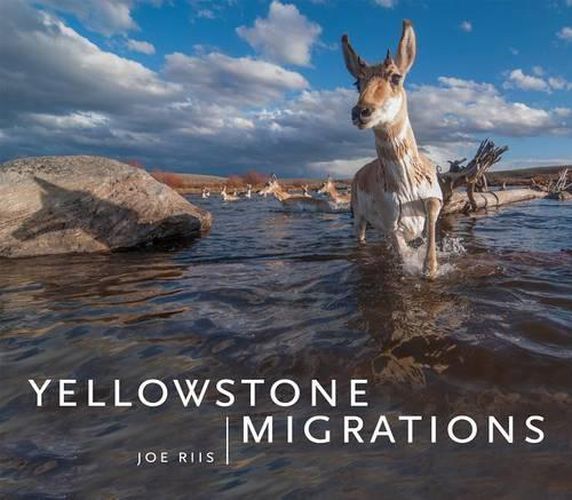Readings Newsletter
Become a Readings Member to make your shopping experience even easier.
Sign in or sign up for free!
You’re not far away from qualifying for FREE standard shipping within Australia
You’ve qualified for FREE standard shipping within Australia
The cart is loading…






Winner of 2017 Gold Nautilus Book Award in Animals and Nature and 2018 Silver Independent Publisher Book Award in Environment, Ecology, and Nature
Large animal migrations are among the primordial rhythms of life on Earth, and, as scientists have recently discovered, the American West is home to some of the planet’s most magnificent migrations. Yellowstone Migration takes readers into the heart of the vast, wild landscapes found in America’s West, and shows us that it is possible to preserve the natural heritage of this iconic region and protect these last intact natural wildlife corridors–so that these animals can carry out the migrations that are essential to their survival.
The Greater Yellowstone Ecosystem, which is a dozen times the size of Yellowstone National Park, harbors the last great populations of migrating elk, pronghorn antelope, and mule deer. Thousands of these grand animals move with the changing seasons to feed and give birth. During their four-month long journey, mule deer navigate not only the natural challenges of rivers, lakes, and sand dunes, but also manmade obstacles such as three major highways and more than 100 fences, many with barbed wire.
In Yellowstone Migrations, wildlife photojournalist Joe Riis follows three primary migrations:
$9.00 standard shipping within Australia
FREE standard shipping within Australia for orders over $100.00
Express & International shipping calculated at checkout
Winner of 2017 Gold Nautilus Book Award in Animals and Nature and 2018 Silver Independent Publisher Book Award in Environment, Ecology, and Nature
Large animal migrations are among the primordial rhythms of life on Earth, and, as scientists have recently discovered, the American West is home to some of the planet’s most magnificent migrations. Yellowstone Migration takes readers into the heart of the vast, wild landscapes found in America’s West, and shows us that it is possible to preserve the natural heritage of this iconic region and protect these last intact natural wildlife corridors–so that these animals can carry out the migrations that are essential to their survival.
The Greater Yellowstone Ecosystem, which is a dozen times the size of Yellowstone National Park, harbors the last great populations of migrating elk, pronghorn antelope, and mule deer. Thousands of these grand animals move with the changing seasons to feed and give birth. During their four-month long journey, mule deer navigate not only the natural challenges of rivers, lakes, and sand dunes, but also manmade obstacles such as three major highways and more than 100 fences, many with barbed wire.
In Yellowstone Migrations, wildlife photojournalist Joe Riis follows three primary migrations: